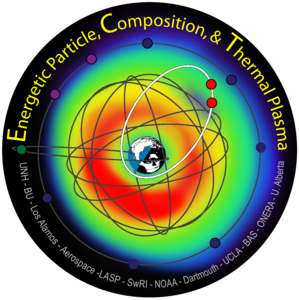Data Quality and Caveats
Issues fixed in Data Release 01
2013-09-12
This is an update on some recent changes in the processing of HOPE data that could affect studies you are doing.
An issue emerged as we were looking at cross-calibration of HOPE and MagEIS data. The upper end of HOPE and the lower end of MagEIS did not agree and were off by almost a factor of 10. Some good detective work by the HOPE team revealed that the Level1 to Level2 processing was not using the correct flux conversion factor. SIMION simulations include a factor of DeltaE/E in the geometric factor that was not properly accounted for in the flux conversion factor. With logarithmic energy spacing DeltaE/E is constant with energy step and it is nearly a factor of 7. As a result HOPE fluxes were high by a factor of 7. This problem has been fixed and all the HOPE data have been reprocessed.
The factor of 7 applies to both ion and electron channels. While it does not affect relative variations of flux it clearly does affect absolute flux values and you should make sure you are using the most recent HOPE files in any analysis you are doing.
The second issue was more subtle and appeared as the team was trying to validate pitch angle data. Like all electrostatic analyzers, HOPE steps in energy rather than taking all energies simultaneously. There was an issue with the time being associated with a particular energy step which also affects the pitch angle assigned to that measurement. Times were being truncated rather than rounded introducing an energy-dependent time (and pitch angle) offset. The error was in the Level0 to Level1 software but didn't appear until Level3 data products. Tracking this down passes a major hurdle in releasing HOPE Level3 data.
While the timing problem is not obvious until Level3 it does exist in Level1 and 2 and will affect any studies looking at detailed timing (particularly burst support data). We don't' know of any current studies that would be affected but, again, we recommend that any times at less than 1-spin resolution should be checked against the new data.







